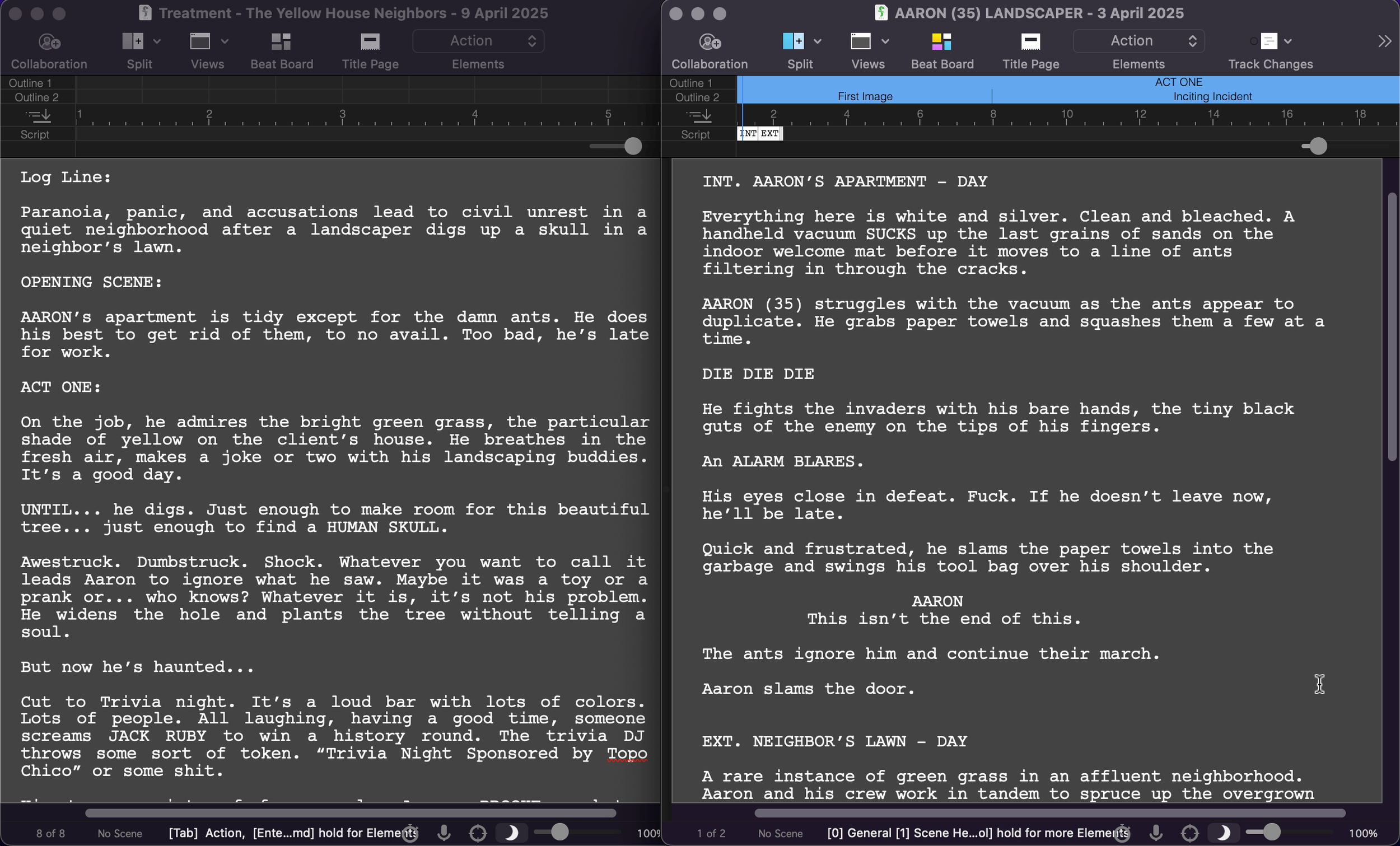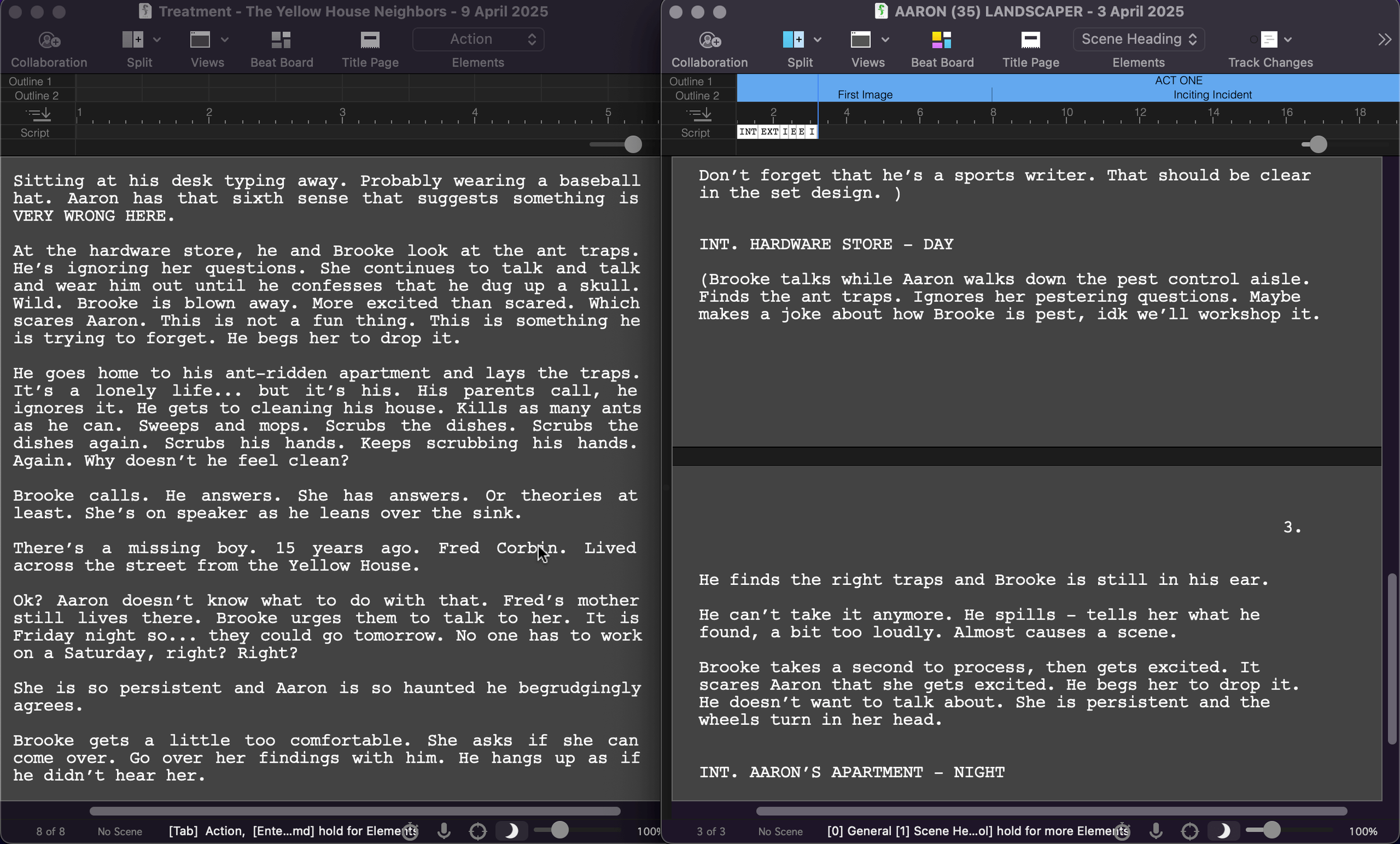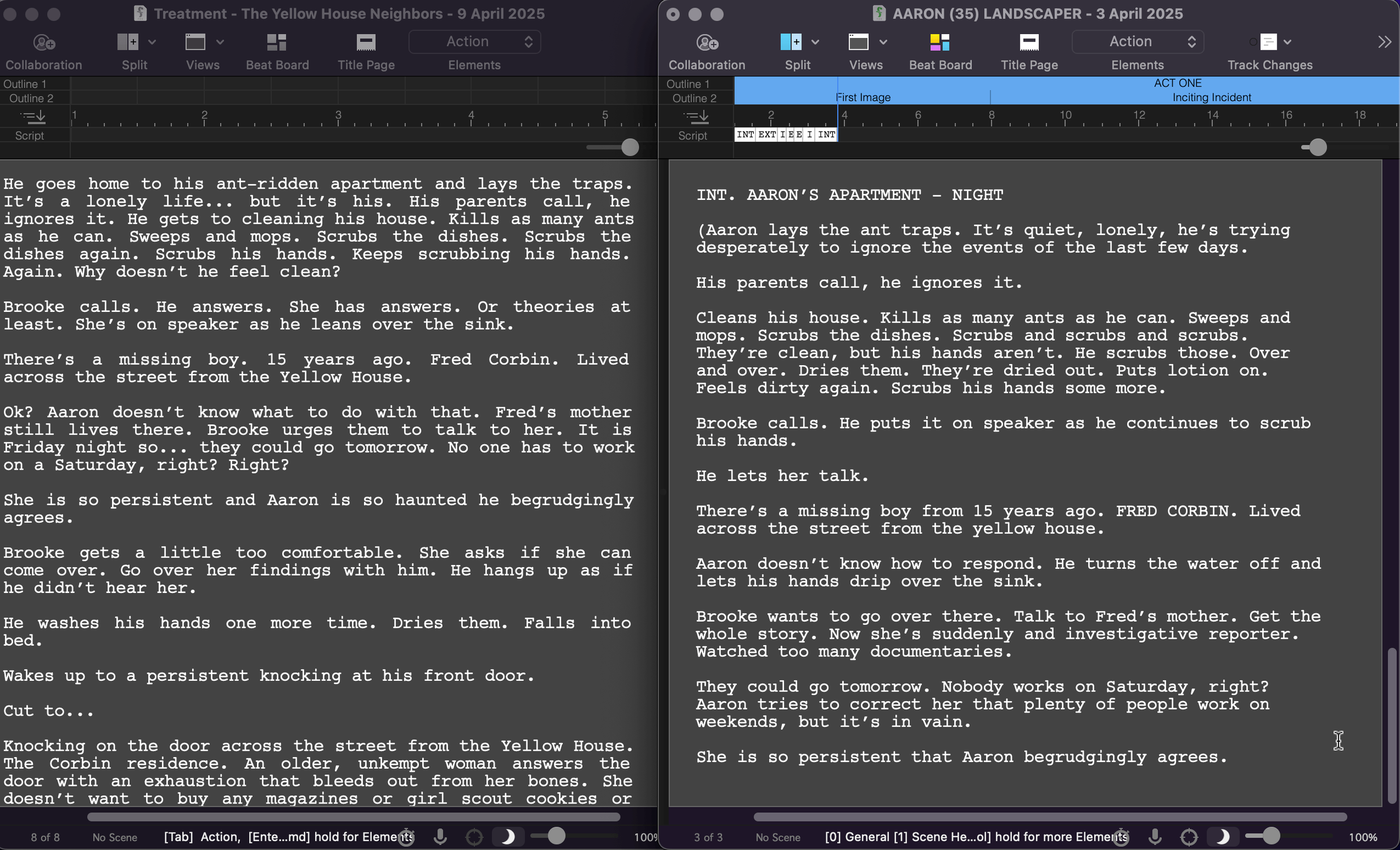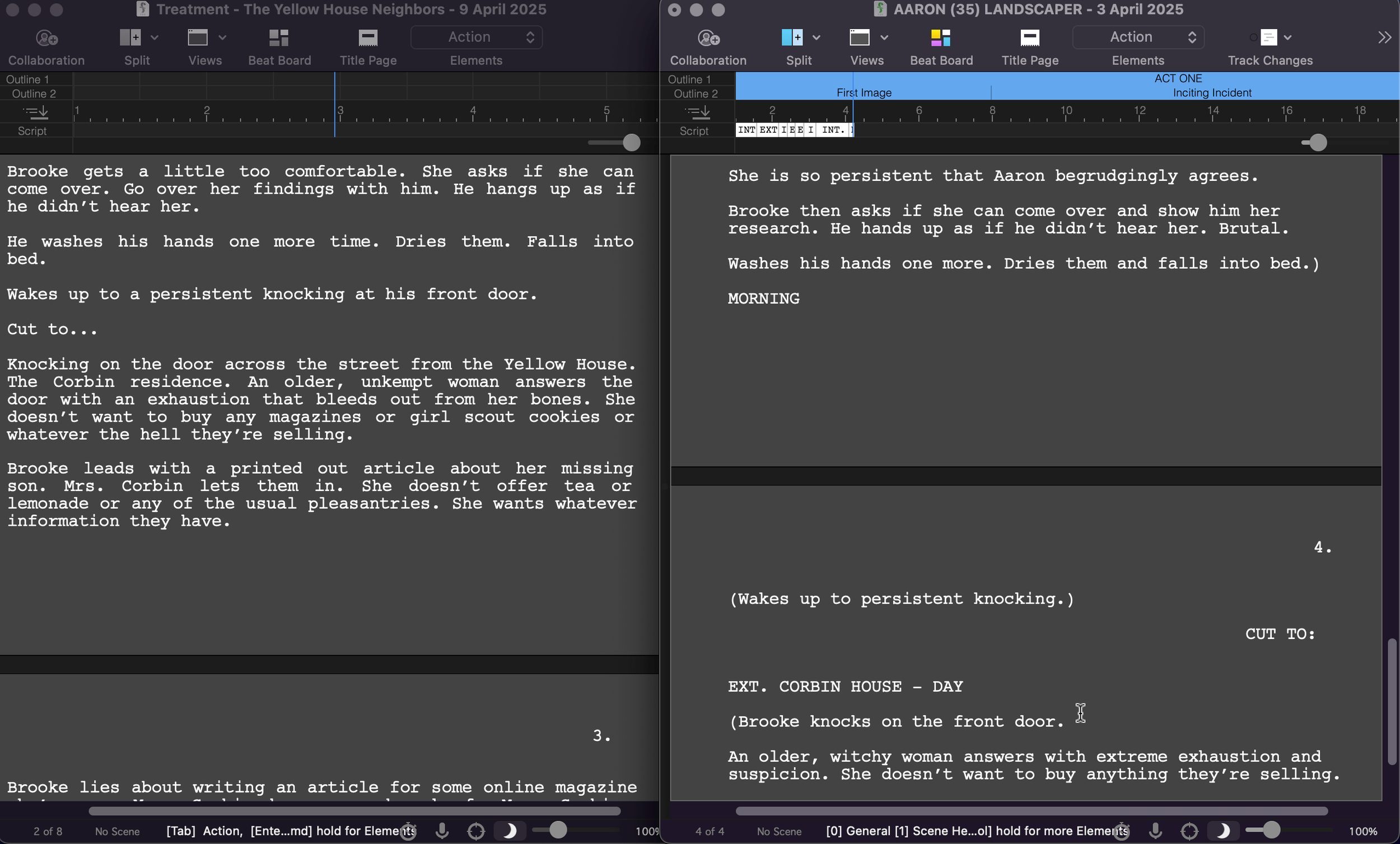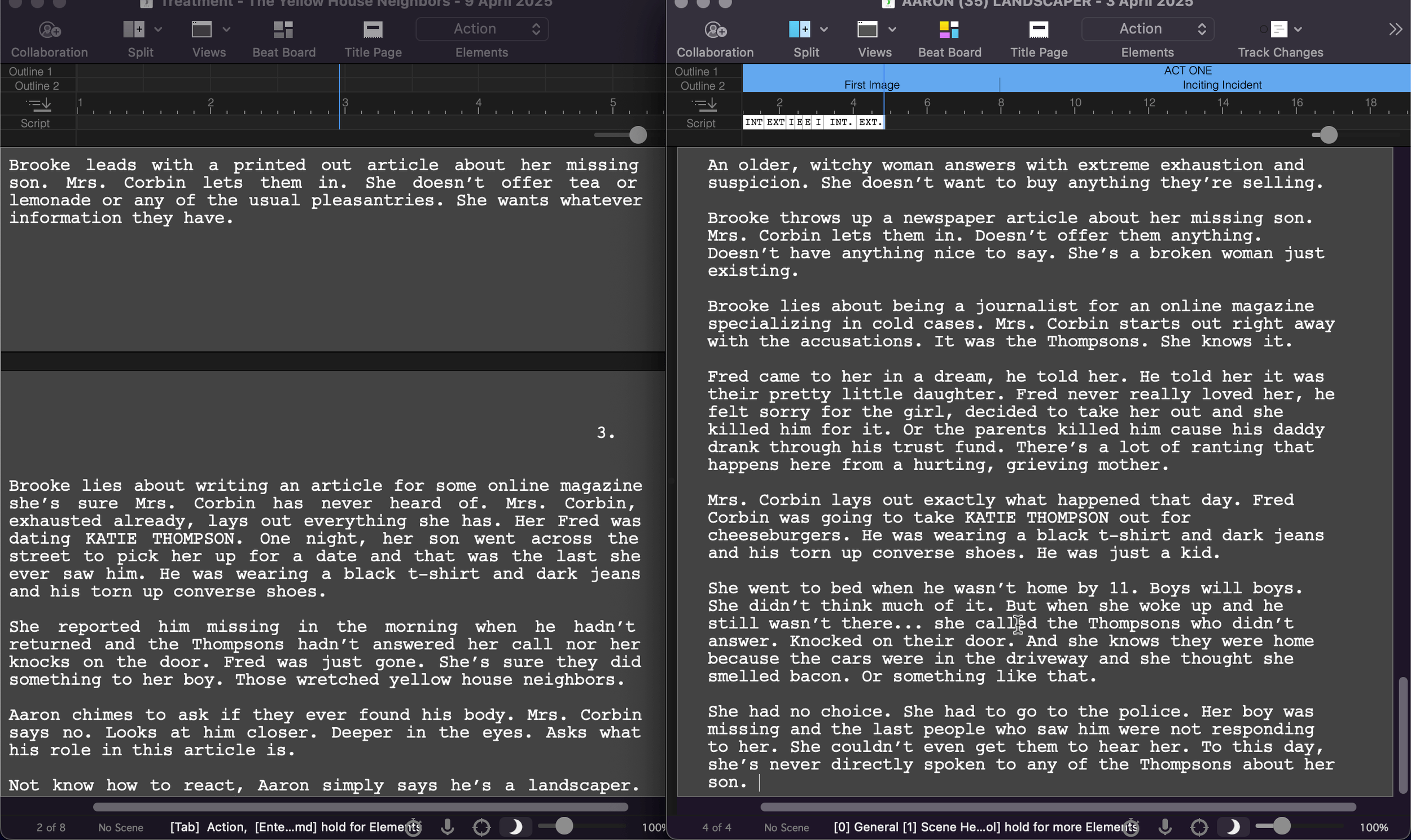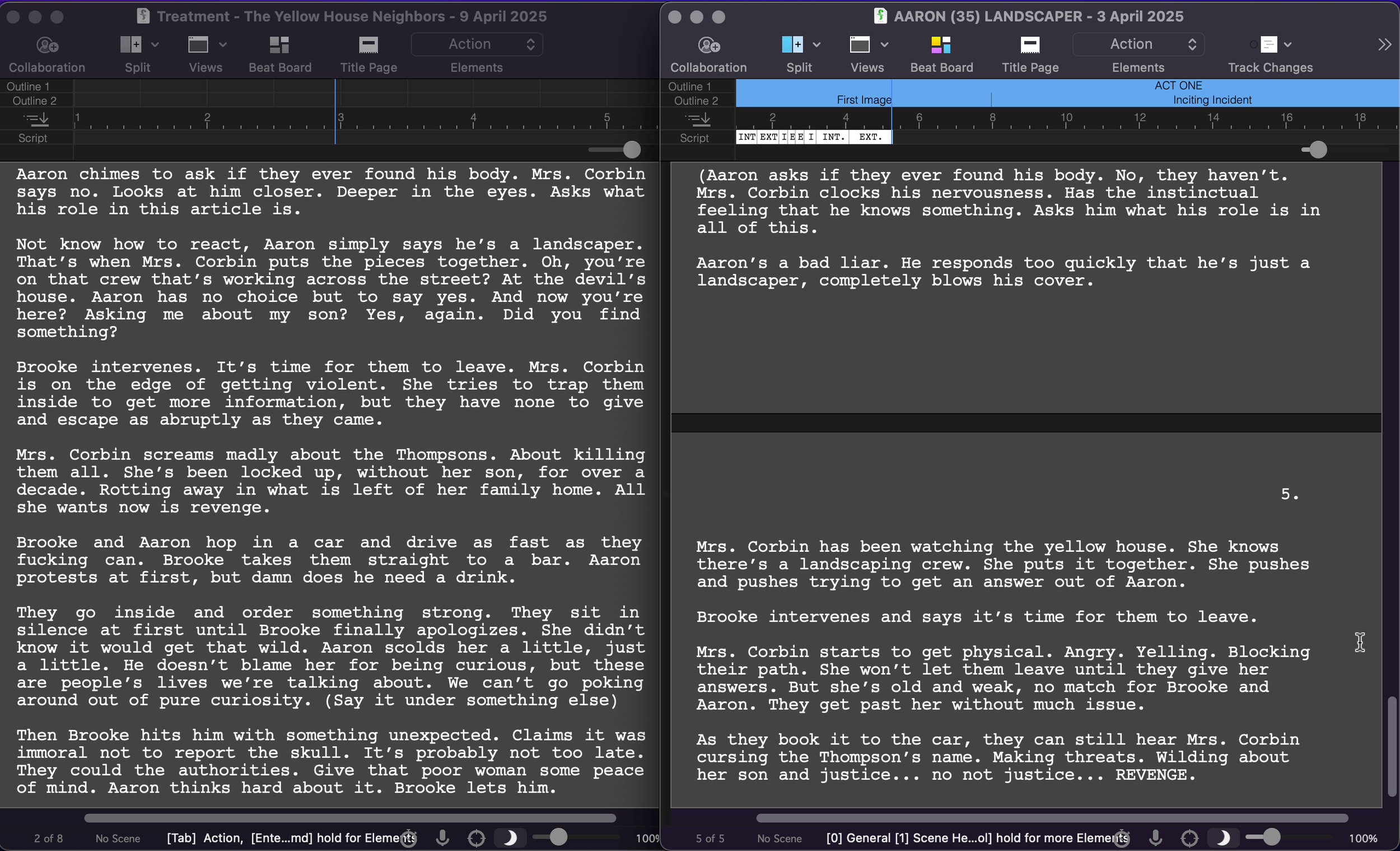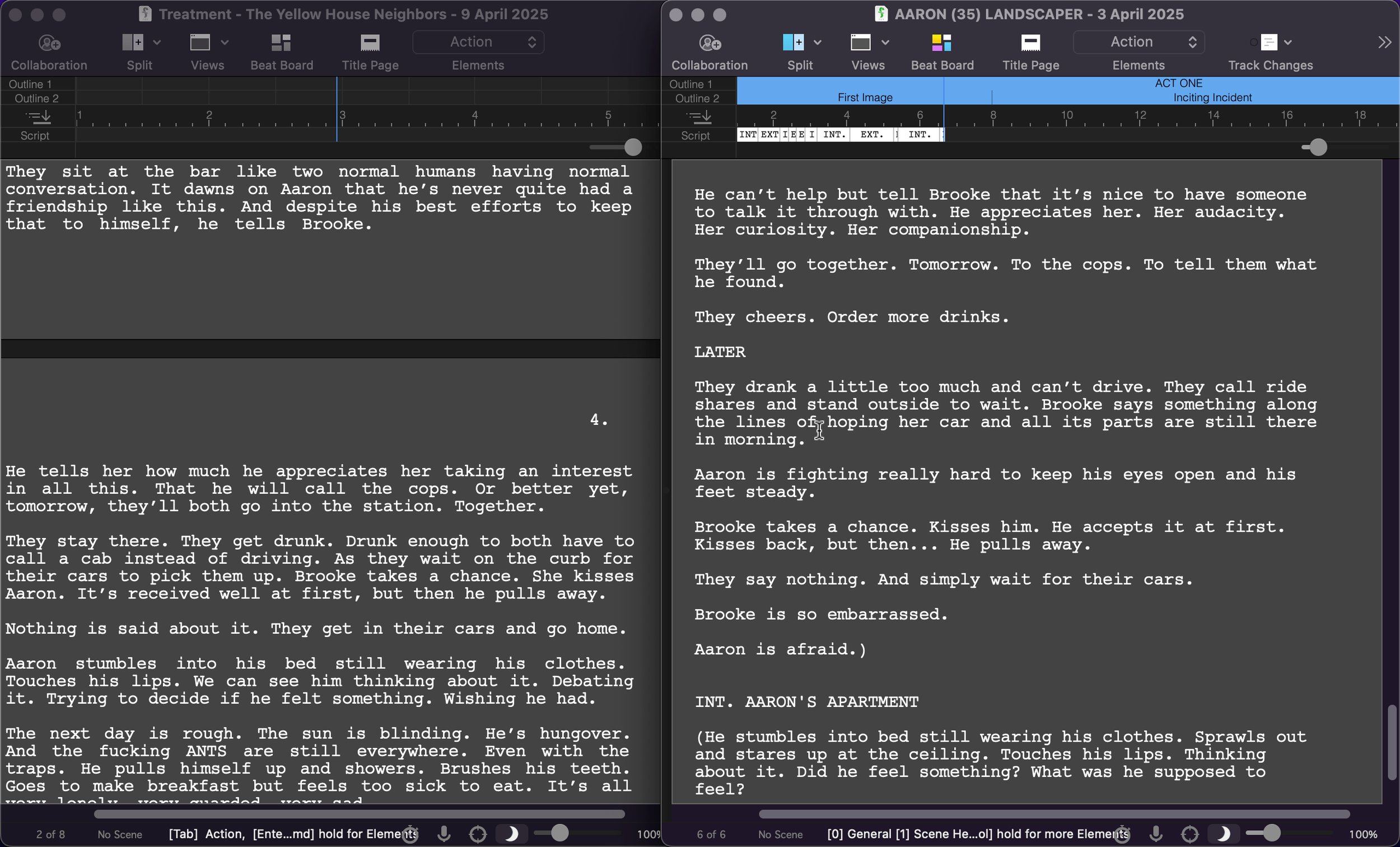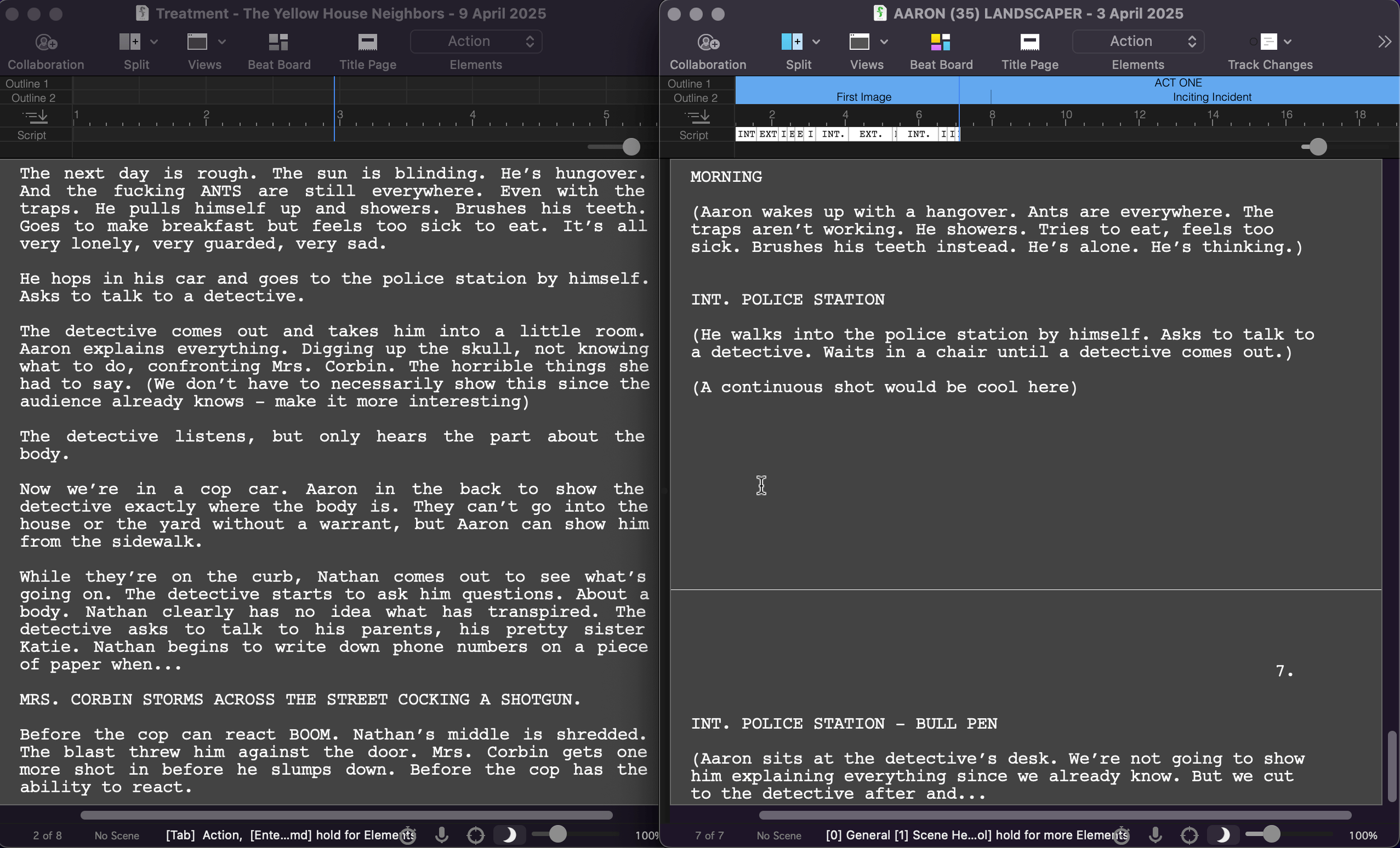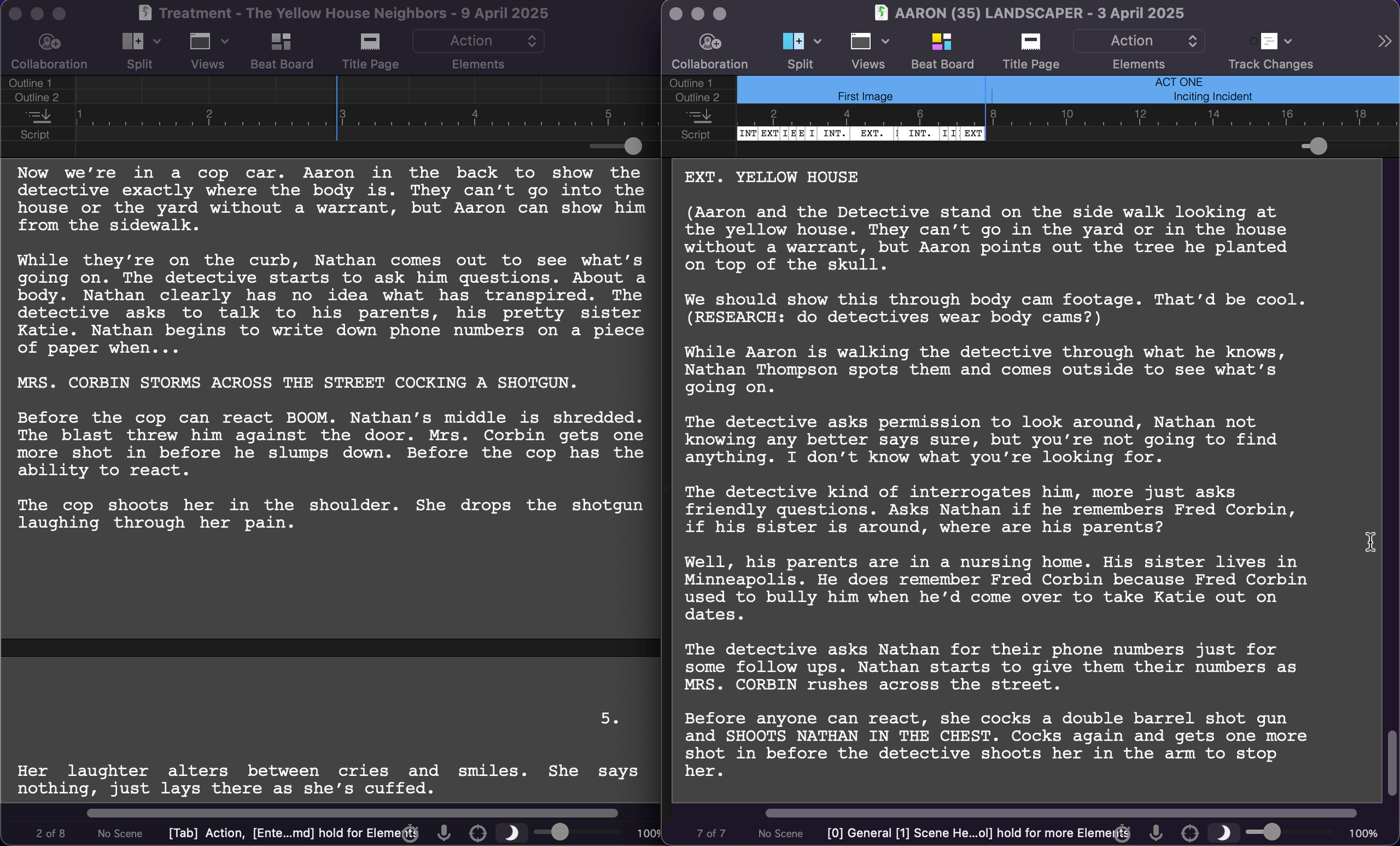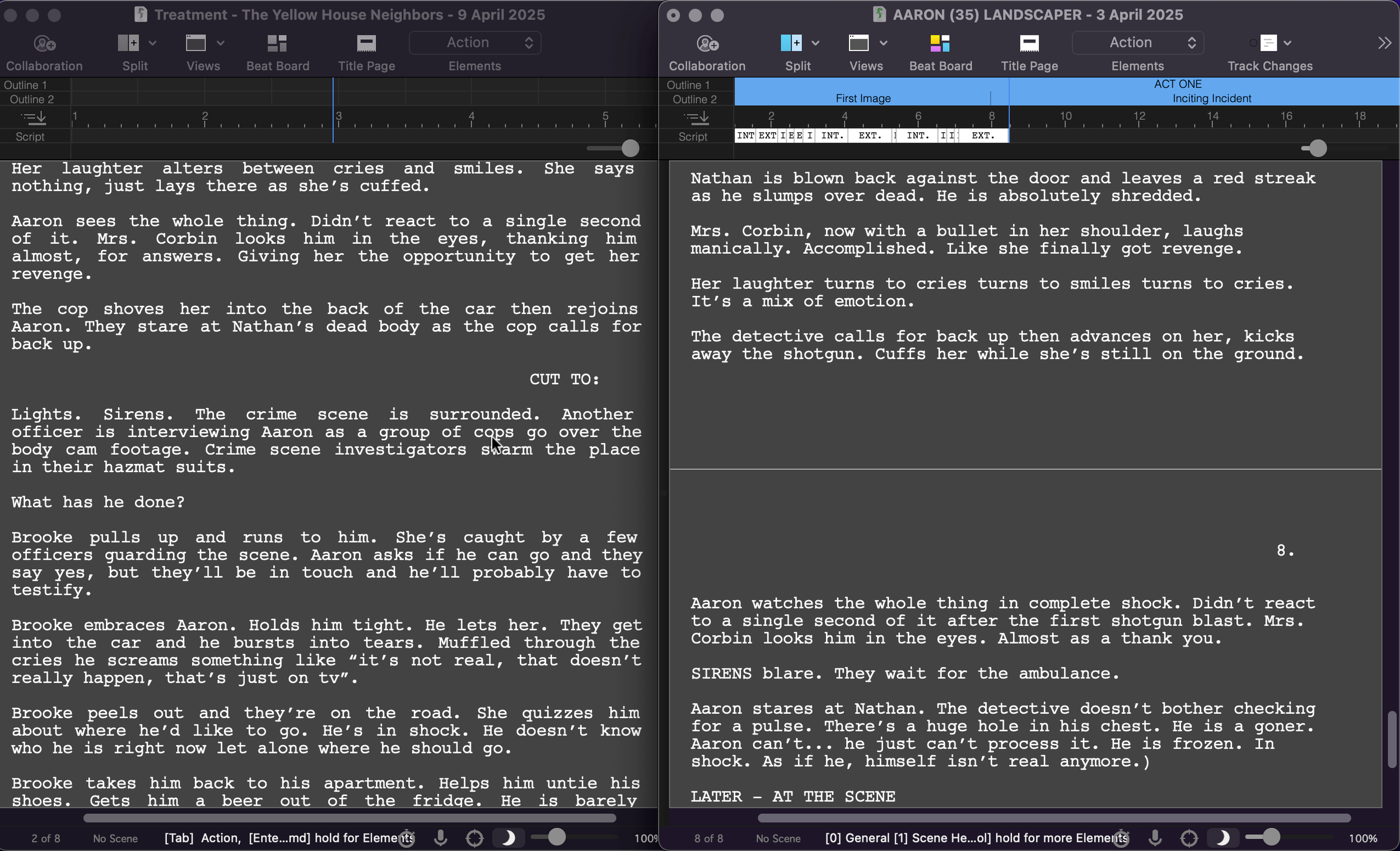19. Setting Up To Write: Part One
Alison Rocket Ross
17 April 2025
Let’s transfer the treatment to the script.
This step is one I wish I had committed to earlier in my writing. By breaking down the treatment and filling our script doc with our cues is like taking a map on a hike. You’ll get lost without it.
I’m all about streamlining the process. Sure, we could go back and forth between treatment and script as we write, but think about all the wasted brain energy from doing that. When you enter flow, you want to protect it. Unnecessary movements can pull you right out of your production, creative headspace.
Here’s how I’m starting out. Side by side. The “brother” phase. Normally, our script document would be completely blank when we start, but I had that day where I wanted to write so we have a little bit to get us going.
Let’s start where we left off.
NOTE: Try not to shame yourself when you go out of order in your process. It’s counter-productive. There’s no right way to do this and it’s ok. I personally struggle with negative self-talk when I stray from my system and it creates blocks. Don’t do that. Just accept it and push forward.
I use the parentheses to distinguish between what is script writing and what is outline. When we start properly writing, it’s going to get a bit chaotic so I like to stay organized. There is a feature on Final Draft where you can import your outline into the script and it will show up blue, but I like to do things my own way. And having different color text is too distracting for me.
Make sure to leave yourself little notes for tone and feel along the way. Don’t be shy. We’ll delete those as we go.
You can see how we’re not changing that much from the outline. If anything, we’re just adding more feeling to it. We’re not worried about page count or polishing here, we’re basically talking to ourselves. Leaving little notes for the future writer to remember which feelings we’re trying to evoke.
It’s too much to try to keep it in your head as you write. Especially when it comes to physical items, easter eggs, and foreshadowing. Like Nathan, for instance — we’re never going to say “he’s a sports writer and used to play baseball”. Instead, we’re going to show him writing at his desk with baseball memorabilia around him. Just enough to develop his character.
I cannot stress enough how harmful too much editing can be in this stage. Just write. Anything and everything you feel or want or cool things you think of. Get it all down.
Something cool happened when we got to Mother Corbin. I could feel the tension in it, see the scene. I’m starting to imagine all the things we could do with the camera. It’s got a very “ghost story” feel to it. That mixed with her unkempt appearance which her residence will reflect and Aaron’s general nervousness… I want to make it a long, tense, scene. Something for Aaron to process. Something that increases his feeling of being haunted.
There will be a big dynamic range here. Mrs. Corbin might be the best role to play in this script. A long monologue, a chance to experiment with vocal techniques, and what actor wouldn’t want to play such an intense character?
Ok… I’ve hit a stopping point. Lost my momentum.
I don’t want to push too hard too fast. We want to give enough time to every part of this script instead of just rushing through.
This part may seem repetitive, but at this stage, repetitive is good. It lets you develop good ideas and shed things that aren’t work. We’re going to have to read this story dozens, if not hundreds of times before we’re done so let’s make it as good and as cool as we can.
For clarity’s sake, I’d just like to say that everything we did in this session took over two hours. It can be deceiving when you read these posts because it takes up maybe five minutes of your time, but as I’m actively working, realistically, each session comes to be around two hours. Sometimes more.
I don’t want anyone to feel like this is something that can be done in one sit down. It takes a lot of energy. It’s ok if things don’t come out rapid and clean. They’re not supposed to. There will be days where you feel your fingers are on fire and you can’t be stopped and other days where you feel like you’ve completely lost the ability to put words on a page.
THAT’S FINE. Writing is hard. We just have to make it work.
We’ll finish it up in part two.
-Rocket
